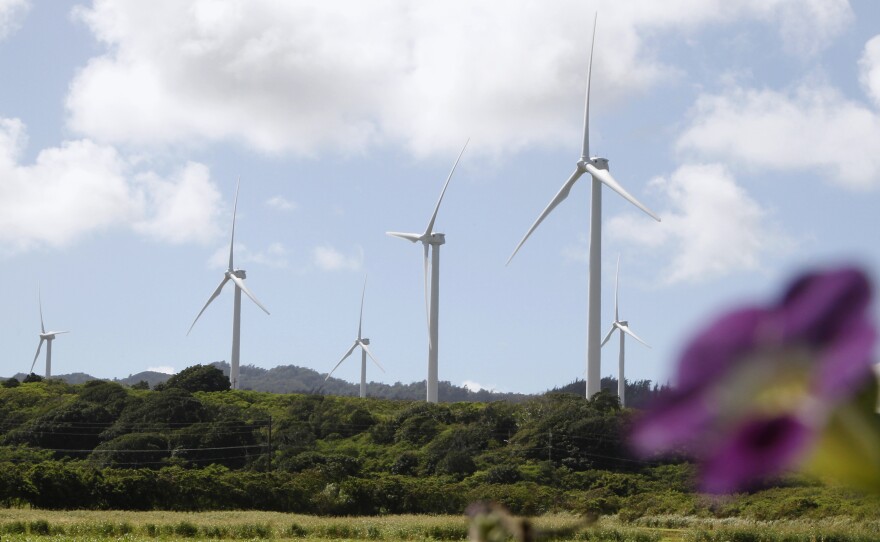The electricity system is experiencing growing pains these days. But it's not only demand for electricity that's expanding -- it's the sources of electricity, particularly unpredictable kinds, like wind farms and solar panels.
And grid operators know that we're just at the beginning. States are requiring more renewable power to fight climate change, and it may be the customers who will play a big role in helping grid operators manage these clean, but finicky, sources of power.
Take Hawaii, which is thousands of miles from anywhere, and has to ship in oil to make much of its electricity. The state wants to replace these costly, dirty imports with clean, homegrown power.
"The state has an initiative to reach 40 percent renewable energy by 2030," says Nohea Hirahara, an engineer for Hawaiian Electric Company. "I believe that's the most aggressive of any state. And it's coming up fast."
She's talking to me from the big room where grid operators manage the flow of electricity for the island of Oahu.
"It kind of looks like space launch control center," she says. There are 12 screens, each 12-feet high. And one of the screens shows how much electricity is coming from wind farms and from solar panels on people's houses.
It used to be that when Hawaiians needed electricity, grid operators just turned up their oil- and coal-fired generators. But now, as they're relying more on wind and solar, their balancing act has gotten a lot trickier.
Wind is a particular challenge. It doesn't blow all the time, so it always needs a backup. But keeping an oil-fired power plant at the ready is expensive.
Hirahara is working on a new remedy for that problem, and it's all about customers. She has recruited big energy users, like hotels, hospitals, office buildings, schools and condos, and is tempting them with discounts.
Here's how the idea works: If, for instance, the wind was decreasing quickly right now, a grid operator would send a message to these customers.
"And the customers would reduce or shut down air conditioning, heat pumps -- big energy users," Hirahara says.
This way, the grid operators wouldn't have to switch on another expensive oil plant. So far, only a few dozen companies have signed up.
"It's very experimental," she admits.
But Hirahara says eventually a partnership with customers like this could help keep the demand and supply of electricity balanced, even in the face of fickle winds. She already has seen the power of customers. In another program, 36,000 customers have signed up to let grid operators switch off their water heaters when demand for power is high. That saves everybody money and limits the use of dirty fossil fuel.
"What's going on in Hawaii is very much a harbinger of what's going to come nationwide, or what I hope comes nationwide," says University of California, Berkeley professor Daniel Kammen, who researches the electricity system. "The grid that we have now, which is really the grid of the old energy systems, is built around large centralized power plants sending power in very predictable ways from those power plants to customers."
To get ready for renewable energy, experts say a closer relationship between utilities and customers is key.
For example, Kammen has solar panels at his home.
"If it's a really hot day and our utility calls an alert where they want people to minimize consumption, if I turn down appliances in our home, then I can sell back more energy, which benefits me but also benefits them," he says.
And Kammen says the grid of the future also needs more ways to store clean energy. Customers can help here, too.
"In California, for example, the wind blows much more strongly at night, when most people's cars are at home in the garage," Kammen says. "And so if wind power comes on to the grid when demand is low but gets put into our cars, that's finding a way to store it."
For this relationship to take off, the grid needs to get a lot smarter and enter the world of big data. Right now people are sending emails and pager signals. In the future, computers will manage this complicated dance.
Copyright 2013 NPR. To see more, visit www.npr.org.






